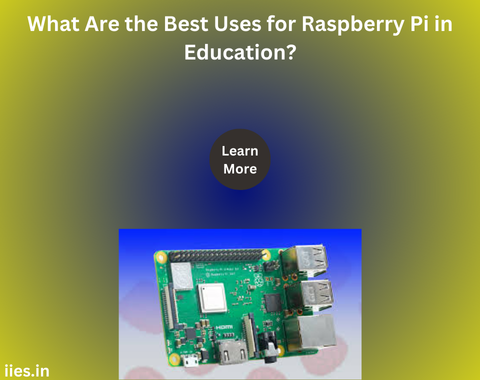
The Raspberry Pi, a credit card-sized computer, has revolutionized the way education is approached in classrooms around the world. Designed to be both affordable and versatile, it serves as an accessible tool for teaching a wide range of subjects. From computing and electronics to science and engineering, the Raspberry Pi offers educators a powerful platform to enhance learning experiences.
One of the primary uses of the Raspberry Pi in education is as a tool for teaching programming. Its compatibility with various programming languages, including Python, Scratch, and Java, makes it an ideal platform for students of all ages to learn coding. By working on simple projects such as creating games, controlling hardware, or building web applications, students can grasp fundamental programming concepts in a hands-on and engaging way.
Raspberry Pi’s GPIO (General Purpose Input/Output) pins allow students to interact with electronic components, enabling the exploration of basic electronics and engineering concepts. Projects like building circuits, controlling LEDs, or designing simple robots provide a practical understanding of how hardware and software can work together. This hands-on experience is invaluable for students pursuing careers in engineering, robotics, or related fields.
Raspberry Pi is at the heart of many STEM (Science, Technology, Engineering, and Mathematics) educational initiatives. It encourages project-based learning, where students can take on ambitious projects such as weather stations, home embedded systems, or even AI-based applications. By engaging in these projects, students not only learn technical skills but also develop critical thinking, problem-solving, and teamwork abilities.
In addition to programming, Raspberry Pi is a powerful tool for teaching broader computer science concepts. It can be used to introduce students to operating systems, networking, cybersecurity, and data management. By working with a full-fledged Linux-based operating system, students gain a deeper understanding of how computers work at a fundamental level, which is crucial for any aspiring computer scientist.
Beyond the technical subjects, Raspberry Pi can also be used to foster creativity in the arts. Students can use it to create digital art, music, or multimedia projects. For example, they can program the Pi to produce music using software like Sonic Pi, or create visual art through coding. This interdisciplinary approach helps students see the connections between technology and the arts, broadening their educational experience.
For schools with limited budgets, Raspberry Pi offers a cost-effective solution to provide students with access to computers. It can be set up as a desktop PC, enabling students to perform basic tasks such as word processing, web browsing, and multimedia playback. This affordability makes it possible for more students to have hands-on experience with computing, regardless of the financial constraints of their institutions.
The Raspberry Pi’s flexibility and low cost also make it a platform for encouraging innovation and entrepreneurship among students. They can prototype their ideas, develop new products, or even start small businesses based on their Raspberry Pi projects. This entrepreneurial aspect not only fosters creativity but also provides practical business and management skills that are essential in today’s economy.
In the context of remote learning, Raspberry Pi can serve as a tool for collaborative education. Students can work on shared projects, code together in real-time, or participate in online coding challenges. The Raspberry Pi Foundation’s online resources, including tutorials and community forums, further support this collaborative learning environment, making education more accessible and interactive.
The Raspberry Pi has proven to be an invaluable asset in education, offering endless possibilities for students and educators alike. Whether it’s introducing students to the world of programming, enabling hands-on electronics projects, or fostering creativity through digital media, the Raspberry Pi is a versatile tool that enhances learning across multiple disciplines. By integrating Raspberry Pi into the curriculum, educators can provide students with the skills and knowledge they need to succeed in an increasingly digital world.
Indian Institute of Embedded Systems – IIES